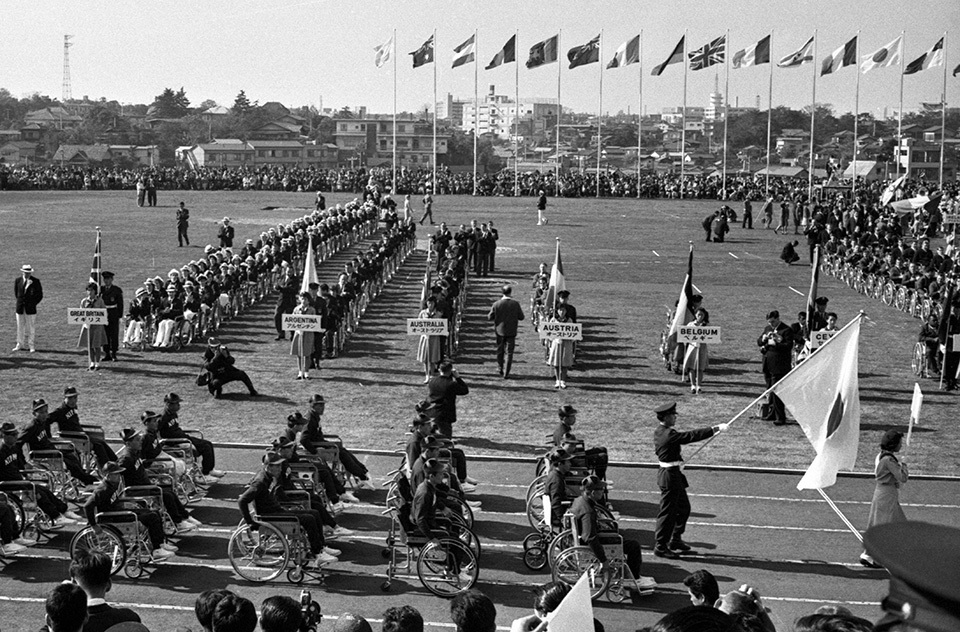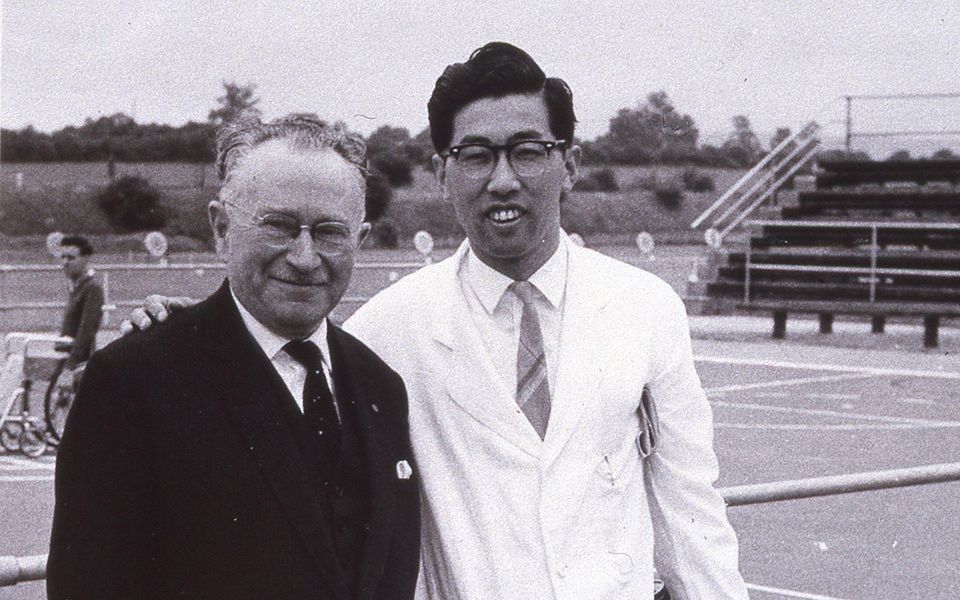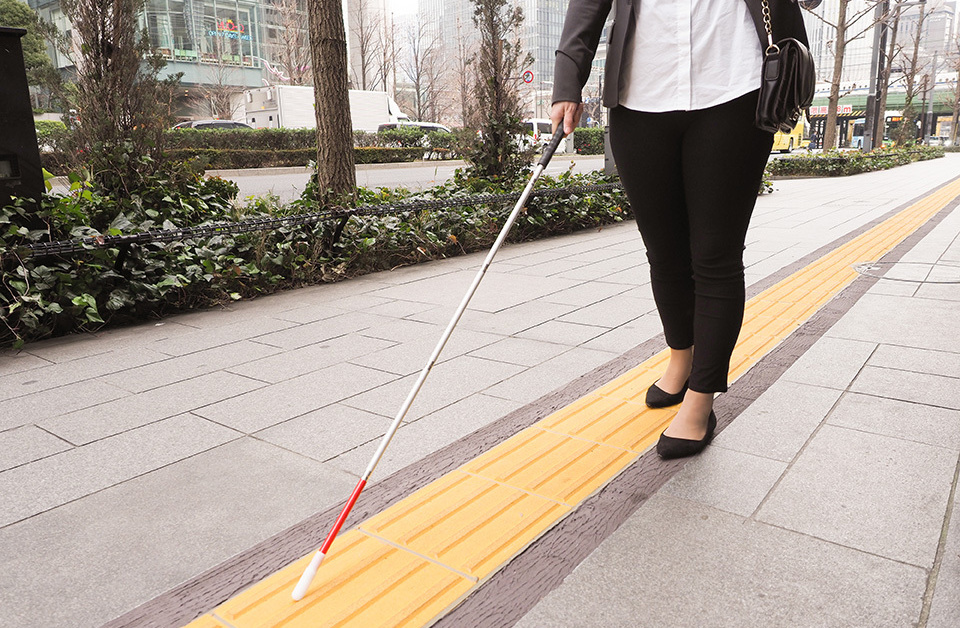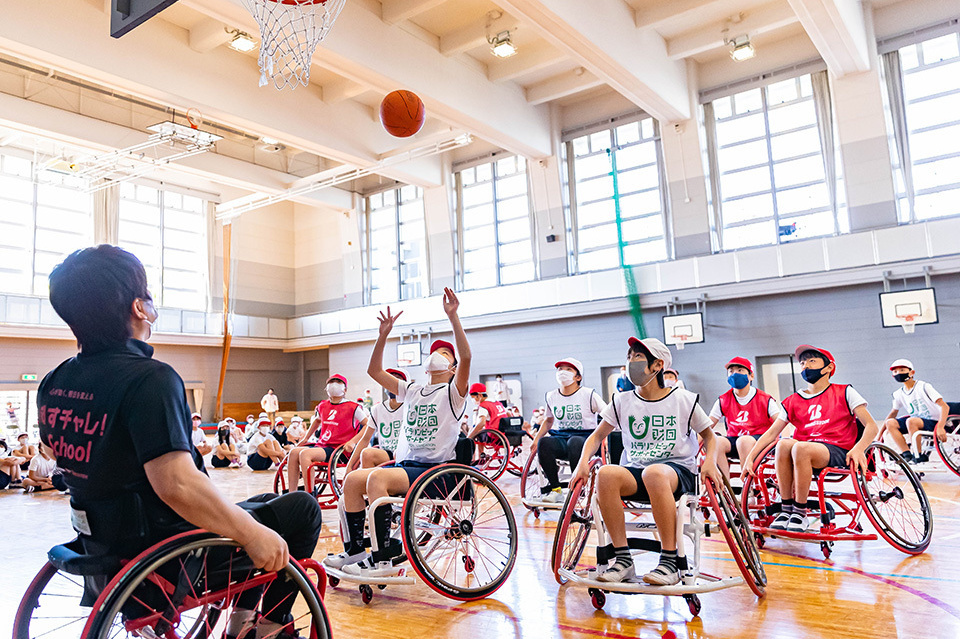With the Paralympic Games opening on August 24, Tokyo is the first city in the world to host the Games twice. The ideas of a Japanese physician, who spared no effort to organize the 1964 Paralympics, have lived on as a legacy of inclusivity, aiming for a society where everyone can express their individuality and lead a full life.

The Opening Ceremony of the 1964 Tokyo Paralympic Games in which para athletes from 21 countries participated. The Japanese team proceeded into the stadium by wheelchair.
Sustaining the excitement of the Tokyo 2020 Olympic Games, the Tokyo 2020 Paralympic Games begin on August 24. This year the Games, hosted by Tokyo for a second time, convey the spirit of “barrier-free.” They contribute toward bringing about an inclusive society in which everyone, regardless of age or ability, can help one another and live in harmony. Even as the compelling nature of sport captures our attention, what moves us is the para athletes’ courage and tenacity.

When he visited a hospital in England in 1960, NAKAMURA Yutaka learned how sports can be integrated into rehabilitation. After he returned to Japan, he put this knowledge into practice. In this photo, he is with Dr. Ludwig Guttmann, who organized a sporting event for physically impaired athletes that became the predecessor to the Paralympics.
One physician who helped make the first Paralympic Games in Tokyo a reality in 1964 also laid the foundation for progress toward an inclusive society in Japan. NAKAMURA Yutaka, an orthopedic surgeon from Oita Prefecture in western Japan, traveled to England in 1960 to study rehabilitation at Stoke Mandeville Hospital. There, he witnessed spinal injury patients engaging in sport as part of their therapy. After half a year, many of these patients had reintegrated into society. More than anything else, Nakamura found it refreshing to see the enthusiastic smiles of the patients who had regained their self-confidence through sport.
Nakamura decided to create an environment where physically impaired people in Japan could also receive rehabilitation through sport. While there were critics who said the patients should rest, Nakamura convinced his peers to put sports therapy into practice. In 1962, he took two wheelchair athletes to the International Stoke Mandeville Games in England, a multi-sport competition for athletes with disabilities. Japanese para athletes had now participated in an international competition. Nakamura then recruited supporters to help organize an international sporting event for physically impaired athletes after the Tokyo 1964 Olympic Games, which led to the holding of the International Stoke Mandeville Games outside of Europe for the first time, in Tokyo. This international sports event for disabled athletes, held in the same year as the Olympics, was later recognized as the second-ever Paralympic Games, the first having taken place in Rome in 1960.
Even after the Games were over, Nakamura didn’t stop his endeavors. He devoted himself to helping the physically impaired reintegrate into society, and in 1965 he established Japan Sun Industries, where disabled people can work and become members of their local community. Enlisting aid from companies, Nakamura created many employment opportunities for physically impaired people across Japan. Today’s parasports and the accompanying progress toward an inclusive society would not be possible without his conviction and effort.
Nakamura’s hope for a society that is inclusive of physically impaired people continues to have an impact today and has inspired new ingenuity. Tactile paving, or braille blocks, for the visually impaired is one example. Laid on sidewalks, at train stations, in public facilities, and elsewhere, tactile paving provides visually impaired people with an essential tool for safe mobility. It was a Japanese inventor, MIYAKE Seiichi, who came up with the idea, and in 1967 the first tactile paving was laid at a crosswalk in Okayama Prefecture.

Tactile paving, or braille blocks, which guides people with visual impairments as they walk, was created by a Japanese inventor. It can be found on sidewalks, at train stations, in public facilities, and elsewhere throughout the world.

The “Asuchalle” Challenge for Tomorrow School is an educational program for children to experience sports with para athletes. Awareness of diversity is the first step toward fostering a barrier-free spirit.
Another example is the “Asuchalle” Challenge for Tomorrow School. Sponsored by The Nippon Foundation Paralympic Support Center, which promotes parasports, it was started in 2016 and provides para athletes as instructors for classes where children can try out these sports. Through a simulated experience of physical impairment, children gain an understanding of those conditions and learn to respect diversity. In the five years since the classes began, over 1,000 schools have participated. Children who have taken the classes have offered feedback that is suggestive of their broadening mindsets: “A physical disability is not the impairment. It is society and people who create the impairment. We learned that people can take action to remove impairments.” These changing attitudes lead to the understanding an inclusive society needs and cultivate a barrier-free spirit in people’s hearts.
The zeal of a single physician helped create the 1964 Paralympic Games, whose legacy today is the progress being made toward an inclusive society. The Tokyo 2020 Paralympic Games carry us another step further on the path toward social inclusion.






























